 Forking over approximately $28,000,000 for the privelege of becoming a player in the video game industry, Warner Communication buys Atari, which had previously been privately owned by Nolan Bushnell and other investors. Though Bushnell remains on Atari’s board for a time, he is eventually removed and replaced by former Burlington Textiles vice president Ray Kassar. At this point, Atari’s most recent product is Atari Video Music, a device that connects to home stereo systems and television sets, producing psychedelic patterns synchronized to music; the company is spending the latter half of 1976 not releasing video game products in an attempt to sit out terms of a legal settlement with Magnavox.
Forking over approximately $28,000,000 for the privelege of becoming a player in the video game industry, Warner Communication buys Atari, which had previously been privately owned by Nolan Bushnell and other investors. Though Bushnell remains on Atari’s board for a time, he is eventually removed and replaced by former Burlington Textiles vice president Ray Kassar. At this point, Atari’s most recent product is Atari Video Music, a device that connects to home stereo systems and television sets, producing psychedelic patterns synchronized to music; the company is spending the latter half of 1976 not releasing video game products in an attempt to sit out terms of a legal settlement with Magnavox.
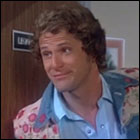 NBC premieres the pilot movie Gemini Man, a retooling of the concept of The Invisible Man series the network cancelled earlier in the year. The movie stars Ben Murphy, Katherine Crawford, and Richard Dysart (L.A. Law). A very brief series will premiere as part of NBC’s fall season.
NBC premieres the pilot movie Gemini Man, a retooling of the concept of The Invisible Man series the network cancelled earlier in the year. The movie stars Ben Murphy, Katherine Crawford, and Richard Dysart (L.A. Law). A very brief series will premiere as part of NBC’s fall season. ![]()

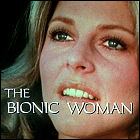 The 12th episode of The Bionic Woman, starring Lindsay Wagner and Richard Anderson, airs on ABC. Anne Schedeen (Alf) and Skip Homeier guest star.
The 12th episode of The Bionic Woman, starring Lindsay Wagner and Richard Anderson, airs on ABC. Anne Schedeen (Alf) and Skip Homeier guest star. Atari introduces
Atari introduces  Asylum Records releases
Asylum Records releases  Coleco, a toy company best known for its air hockey tables, releases its first video game console, the Coleco Telstar. A self-contained unit capable of playing three variants of video tennis, Telstar retails for roughly half the price of Atari’s Pong console, and Coleco sells over a million units of Telstar in various guises and case styles through the end of the decade. In the early 1980s, Coleco begins development of its own programmable, cartridge-based successor to Telstar, which will reach the market in 1982 as Colecovision.
Coleco, a toy company best known for its air hockey tables, releases its first video game console, the Coleco Telstar. A self-contained unit capable of playing three variants of video tennis, Telstar retails for roughly half the price of Atari’s Pong console, and Coleco sells over a million units of Telstar in various guises and case styles through the end of the decade. In the early 1980s, Coleco begins development of its own programmable, cartridge-based successor to Telstar, which will reach the market in 1982 as Colecovision.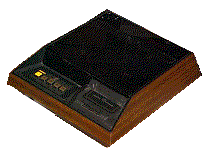 A major breakthrough in an industry that was previously dominated by expensive, bulky consoles that could only play a handful of games each, Fairchild introduces its Video Entertainment System, the first programmable video game system. Though it has several built-in games like its predecessors, the Fairchild system allows owners to add new games by purchasing “Videocarts” – roughly the size of 8-track tapes – containing additional games. Fairchild later renames its VES console Channel F to avoid market confusion with Atari’s VCS (Video Computer System), which doesn’t arrive on the scene until the following year.
A major breakthrough in an industry that was previously dominated by expensive, bulky consoles that could only play a handful of games each, Fairchild introduces its Video Entertainment System, the first programmable video game system. Though it has several built-in games like its predecessors, the Fairchild system allows owners to add new games by purchasing “Videocarts” – roughly the size of 8-track tapes – containing additional games. Fairchild later renames its VES console Channel F to avoid market confusion with Atari’s VCS (Video Computer System), which doesn’t arrive on the scene until the following year.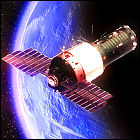 The Soviet Union launches the two-ton Salyut 5 space station into Earth orbit. Salyut 5 is the final Soviet space station to utilize the Almaz military station architecture originally specified in the 1960s (at which time Almaz was developed to counter the perceived threat from the never-launched American Manned Orbiting Laboratory). The station carries Earth surveillance equipment and a return capsule for later retrieval of experiments and film. Salyut 5 remains in orbit for a little over a year, visited by only two crews.
The Soviet Union launches the two-ton Salyut 5 space station into Earth orbit. Salyut 5 is the final Soviet space station to utilize the Almaz military station architecture originally specified in the 1960s (at which time Almaz was developed to counter the perceived threat from the never-launched American Manned Orbiting Laboratory). The station carries Earth surveillance equipment and a return capsule for later retrieval of experiments and film. Salyut 5 remains in orbit for a little over a year, visited by only two crews.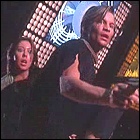 The MGM movie
The MGM movie 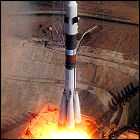 The Soviet Union launches cosmonauts Boris Volynov and Vitaly Zholobov aboard Soyuz 21, the first mission to the newly-orbited Salyut 5 military space station. Though a few scientific experiments are conducted, most of the crew’s activities involve military surveillance of Earth. The crew’s stay is intended to last as long as two months, though an emergency aboard the station will cut that stay short.
The Soviet Union launches cosmonauts Boris Volynov and Vitaly Zholobov aboard Soyuz 21, the first mission to the newly-orbited Salyut 5 military space station. Though a few scientific experiments are conducted, most of the crew’s activities involve military surveillance of Earth. The crew’s stay is intended to last as long as two months, though an emergency aboard the station will cut that stay short. Argo Records
Argo Records  After grueling location shooting in Tunisia and lengthy studio filming at Elstree Studios in England, principal photography wraps up on George Lucas’
After grueling location shooting in Tunisia and lengthy studio filming at Elstree Studios in England, principal photography wraps up on George Lucas’ 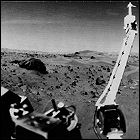 Viking 1 makes a soft landing on Mars, the first spacecraft to do so intact (the Soviet space program had been attempting to put landers on Mars, some of them including rudimentary rovers, since 1962). It successfully transmits the first picture from the Martian surface back to Earth within seconds, and successfully gathers soil samples for analysis. Viking 1’s orbiter mothership will later shut down in 1980, but the lander itself functions until 1982. Viking 1’s landing takes place on the seventh anniversary of the first manned moon landing.
Viking 1 makes a soft landing on Mars, the first spacecraft to do so intact (the Soviet space program had been attempting to put landers on Mars, some of them including rudimentary rovers, since 1962). It successfully transmits the first picture from the Martian surface back to Earth within seconds, and successfully gathers soil samples for analysis. Viking 1’s orbiter mothership will later shut down in 1980, but the lander itself functions until 1982. Viking 1’s landing takes place on the seventh anniversary of the first manned moon landing. The Viking 1 orbiter, observing Mars from orbit while relaying data from the Viking 1 lander to Earth, snaps a close-up view of the Martian moon Phobos from within 5,000 miles. Though more distant from Phobos than Mariner 9’s closest pass in 1972, the Viking cameras are vastly superior, revealing greater detail even at greater distances; craters as small as 13 miles across can be seen in the images. JPL scientists and mission planners are already developing ideas for future Mars missions, including unmanned landers with wheeled rovers.
The Viking 1 orbiter, observing Mars from orbit while relaying data from the Viking 1 lander to Earth, snaps a close-up view of the Martian moon Phobos from within 5,000 miles. Though more distant from Phobos than Mariner 9’s closest pass in 1972, the Viking cameras are vastly superior, revealing greater detail even at greater distances; craters as small as 13 miles across can be seen in the images. JPL scientists and mission planners are already developing ideas for future Mars missions, including unmanned landers with wheeled rovers. NASA and the National Oceanic & Atmospheric Administration launch NOAA-5, a weather satellite intended to operate in a near-polar low Earth orbit. Within two weeks of its launch, NOAA-5 proves instrumental in tracking Hurricane Belle, a category 1 hurricane, as it approaches and makes landfall in the northeastern United States. NOAA-5 will operate without any major malfunctions through July 1979.
NASA and the National Oceanic & Atmospheric Administration launch NOAA-5, a weather satellite intended to operate in a near-polar low Earth orbit. Within two weeks of its launch, NOAA-5 proves instrumental in tracking Hurricane Belle, a category 1 hurricane, as it approaches and makes landfall in the northeastern United States. NOAA-5 will operate without any major malfunctions through July 1979. Mushroom Records releases
Mushroom Records releases 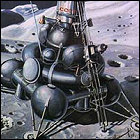 The Soviet Union launches the robotic lunar lander and sample return mission, Luna 24. Touching down safely in the Mare Crisium region two weeks after its launch, Luna 24 drills a two-meter core sample of lunar soil for return to Earth in a small reentry capsule. Luna 24 is the final Soviet mission to the moon, and is the last vehicle from Earth to land on the moon in the 20th century. NASA and the Soviet space agency exchange samples of lunar soil later in 1976, since Luna 24 landed in a region unexplored by the Apollo manned landing missions.
The Soviet Union launches the robotic lunar lander and sample return mission, Luna 24. Touching down safely in the Mare Crisium region two weeks after its launch, Luna 24 drills a two-meter core sample of lunar soil for return to Earth in a small reentry capsule. Luna 24 is the final Soviet mission to the moon, and is the last vehicle from Earth to land on the moon in the 20th century. NASA and the Soviet space agency exchange samples of lunar soil later in 1976, since Luna 24 landed in a region unexplored by the Apollo manned landing missions.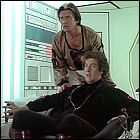 The
The 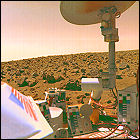 NASA’s Viking 2 lander, launched from Earth almost exactly a year earlier touches down on Martian soil in the Utopia Planitia region. One of Viking 2’s three landing legs comes down on a rock, leaving the entire lander at an eight-degree angle to the ground. Identical to Viking 1, Viking 2 has its own soil sampling arm, though its series of tests for biological reactions within the soil produce inconclusive results (including at least one “positive” test for signs of life, later attributed to inorganic chemical reactions). Viking 2 will also later confirm that water exists, at least briefly, on the surface of Mars in the form of frost.
NASA’s Viking 2 lander, launched from Earth almost exactly a year earlier touches down on Martian soil in the Utopia Planitia region. One of Viking 2’s three landing legs comes down on a rock, leaving the entire lander at an eight-degree angle to the ground. Identical to Viking 1, Viking 2 has its own soil sampling arm, though its series of tests for biological reactions within the soil produce inconclusive results (including at least one “positive” test for signs of life, later attributed to inorganic chemical reactions). Viking 2 will also later confirm that water exists, at least briefly, on the surface of Mars in the form of frost.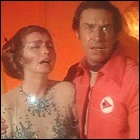 The
The  The
The  Forking over approximately $28,000,000 for the privelege of becoming a player in the video game industry, Warner Communication buys Atari, which had previously been privately owned by Nolan Bushnell and other investors. Though Bushnell remains on Atari’s board for a time, he is eventually removed and replaced by former Burlington Textiles vice president Ray Kassar. At this point, Atari’s most recent product is Atari Video Music, a device that connects to home stereo systems and television sets, producing psychedelic patterns synchronized to music; the company is spending the latter half of 1976 not releasing video game products in an attempt to sit out terms of a legal settlement with Magnavox.
Forking over approximately $28,000,000 for the privelege of becoming a player in the video game industry, Warner Communication buys Atari, which had previously been privately owned by Nolan Bushnell and other investors. Though Bushnell remains on Atari’s board for a time, he is eventually removed and replaced by former Burlington Textiles vice president Ray Kassar. At this point, Atari’s most recent product is Atari Video Music, a device that connects to home stereo systems and television sets, producing psychedelic patterns synchronized to music; the company is spending the latter half of 1976 not releasing video game products in an attempt to sit out terms of a legal settlement with Magnavox.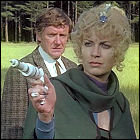
 The 23rd episode of Filmation’s live-action Shazam! series airs on CBS, starring John Davey, Michael Gray and Les Tremayne. William Campbell (Star Trek) guest stars in the third season premiere.
The 23rd episode of Filmation’s live-action Shazam! series airs on CBS, starring John Davey, Michael Gray and Les Tremayne. William Campbell (Star Trek) guest stars in the third season premiere. ABC premieres the
ABC premieres the 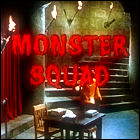 NBC premieres the first episode of Monster Squad, a live-action Saturday morning comedy series imagining Dracula, Frankenstein, and the Wolfman as a crime-fighting team led by Walter (Fred Grandy, a year before he would set sail on The Love Boat). (Though similar in concept, the series is unrelated to the late theatrical movie of the same name.)
NBC premieres the first episode of Monster Squad, a live-action Saturday morning comedy series imagining Dracula, Frankenstein, and the Wolfman as a crime-fighting team led by Walter (Fred Grandy, a year before he would set sail on The Love Boat). (Though similar in concept, the series is unrelated to the late theatrical movie of the same name.)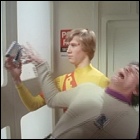 The
The